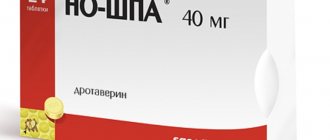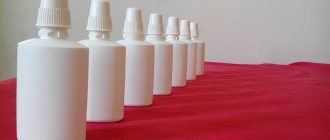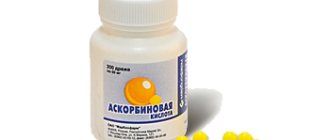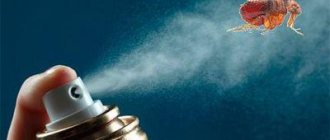Hellebore water poisoning is a serious disorder that causes negative consequences. In accordance with the International Classification of Diseases, the ICD 10 code is T50.9.0. This remedy comes in liquid form and is usually used against parasites - most often lice. Hellebore water is quite toxic, which makes it possible to effectively cope with the problem.
This product is made from puppeteer (hellobeer). This herbaceous plant contains alkaloids that help cope with parasites. The active ingredients almost do not penetrate the body. But in case of prolonged use, intensive rubbing or ingestion, there is a risk of poisoning with hellebore water.
Non-traditional application
The medicinal properties of hellebore are popular in alternative medicine, despite the dangers of using the herb at home. Traditional healers prefer to make their own medicine. The infusion is often used to treat people addicted to alcohol. Decoctions are added directly to food and water. Careless treatment by a puppeteer is extremely dangerous and even disastrous for the pseudo-doctor and the patient. The first will suffer during the procurement of plant products due to the high concentration of poison in the stems, leaves and roots.
Hellebore in its natural habitat
What is hellebore? This is a plant from the Liliaceae family. The amazing properties of the plant were described by ancient doctors. From Latin the name of the herb is translated as “soothsayer” or “sorceress”. There are confirmed facts about the flowering of the plant only after reaching the age of 16. Flowering begins in mid-summer, and at its end the flowers are replaced by capsules with seeds. The tincture contains the rhizome of a plant that has a garlicky aroma. People don’t give plants good names; In addition to the puppeteer, it is called a death eater or even a lousy seed. Herbalists, speaking about the properties of the plant, mention its ability to induce vomiting.
Danger of poisoning
Puppeteer leaves, roots and rhizomes, flowers and inflorescences contain a lot of plant poisons. Poisoning with the drug will cause serious consequences. According to the international classification of diseases, the ICD 10 code is T50.9.0. This is a group of poisonings with alcohol and its substitutes.
Protoveratrine, veratramine, veratralbin, germetrin, yervin are alkaloid poisons with a high degree of neurotoxicity. Each of them can cause acute poisoning of the body, disruption of the stomach, intestines, liver and kidneys. And an overdose of even one is fraught with the danger of death.
The root contains the largest percentage of poison; it was often used in alternative medicine in the treatment of chronic alcoholism. Such dangerous use of a poisonous plant often caused severe poisoning and death.
Fighting alcohol addiction with the help of such a dubious remedy is still dangerous to this day. Relatives add the drug to an addicted family member without his knowledge, which creates the risk of delaying seeking help.
An alcohol-containing tincture or the use of the drug together with alcohol poses a serious danger. Alcohols increase the concentration of poison and accelerate its penetration into the circulatory system.
Hellebore grass
Causes of poisoning
If you use it carelessly and fail to comply with a number of conditions, it is easy to cause irreparable harm to your health. Hellebore water poisoning will occur if:
- Take hellebore water with food or drinks;
- Neglect medical prescriptions;
- Significantly exceed the safe dose of the drug;
- Apply the drug liberally to the skin;
- Trying to make medicine through underground production;
- Use the drug accidentally (children, elderly people);
- Using hellebore water in treatment for a long time causes an accumulation of alkaloids in the human body.
Alarming symptoms will appear within half an hour after careless entry of the drug into the body, sometimes later. It depends on what food the victim ate and how long it takes to digest. Drinking hellebore water with starchy food will delay the poisoning process for several hours.
Prevention
Despite its high intoxicating properties, hellebore water is sold without a prescription. Therefore, it is necessary to follow some rules to avoid being poisoned by a pharmaceutical product:
- Do not store the drug in the open at home, especially if you have small children.
- Do not use folk recipes for tinctures and decoctions of puppeteer for therapy - the plant is too poisonous.
- Follow the dosage indicated in the instructions.
- Do not add alcohol to the food or drink of an alcoholic.
If preventive measures have no effect and poisoning occurs, call an ambulance immediately. Hellebore is extremely poisonous and can lead to tragedy.
Daria Shirochina
Practitioner. She graduated with honors from Vitebsk State Medical University in 2012 with a degree in general medicine. She was awarded a certificate of honor for her achievements in her work.
Clinical picture of poisoning
The plant poisons contained in the preparation, spreading through the circulatory system, actively affect the heart and blood vessels, and brain activity. Such exposure is accompanied by a number of unpleasant and dangerous symptoms:
- Severe vomiting, bloody diarrhea;
- Dehydration of the body;
- Stomach upset;
- Shortness of breath, lump in the throat and tickling in the nose, severe cough;
- Slow heart rate, surges in blood pressure;
- Convulsive condition, limb spasms;
- Pain in temples;
- Drooling, pain when swallowing;
- Severe bradycardia;
- Dizziness, confusion, loss of perception and consciousness.
Symptoms of hellebore water poisoning are similar to those of severe food poisoning. But there is a serious danger of cardiac arrest. Under no circumstances should you neglect medical care or conceal the causes of poisoning from doctors. The doctor will prescribe the correct treatment only if he provides a complete picture of what is happening.
Individual symptoms of hellebore water poisoning can lead to a number of more dangerous signs and abnormalities in the functioning of the body.
Increased body temperature
There should be no increase in temperature when the body is intoxicated with hellebore water. A high temperature will appear as a symptom of the consequences of poisoning; it indicates the presence of an infection due to inflammation of the kidneys, liver, intestines or stomach.
If the temperature rises above 38 degrees, the victim should be given a strong antipyretic.
Properties of the drug
The pharmacy tincture of hellebore is generously saturated with the main components of the herb itself - cevadin and veratridine. These substances belong to alkaloids - poisonous products of plant metabolism, giving them immunity against natural enemies (insects, fungi, herbivores). Not only highly poisonous herbs are rich in alkaloids - they are found in all spices, celandine, St. John's wort, lily of the valley, and lilac.
Among the beneficial properties of alkaloids and herbs rich in them, one can highlight their ability to replace antibiotics. These substances are equally dangerous for humans, bacteria, and helminths. This allows them to reduce inflammation, stop the spread of infections at the sites of application, and even suppress malignant neoplasms (the immaturity of cancer cells makes them more sensitive to poison, penetrating radiation and other unfavorable factors).
Thanks to them, hellebore water is taken for alcoholism, and it is also an effective remedy for lice and their nits. But the concentration of cevadin and veratridine in hellebore is too high for oral administration. Symptoms of intoxication from its use externally or internally look like this:
- a sharp drop in blood pressure;
- dyspnea;
- arrhythmia;
- spasm of the coronary arteries (manifested by chest pain and lack of oxygen);
- repeated vomiting.
Actions in case of poisoning, first aid to the victim
If at least one symptom of poisoning appears, the victim immediately needs emergency medical care and a specialized clinic. It is important to provide the poisoned person with plenty of warm drink and adsorbent preparations (activated carbon at the rate of 10-15 tablets per 10 kg of weight, Polysorb, Smecta, Polyphepan, Atoxyl). Remember that such drugs will be of no use if poisoning is accompanied by severe vomiting.
Vomiting and severe diarrhea dehydrate the body, which puts the victim at even greater risk of irreversible changes in the body.
In case of severe intoxication of the body with hellebore, qualified treatment is required. Under the supervision of doctors, antidotes are used that can eliminate the signs of poisoning and eliminate the consequences.
Antidotes for poisoning:
- Atropine sulfate in a dosage of 1 ml will restore the heart rhythm and improve the functioning of the heart muscle;
- Cordiamine and caffeine will restore breathing;
- Cocarboxylase, riboxin, ATP, Panangin with asparkam will help normalize work in the myocardium;
- Benzodiazepine will deal with seizures;
- Adrenaline, prednisolone to normalize blood pressure and restore blood circulation;
- Preparations containing K, Mg, N, to eliminate electrolyte disturbances in the body;
- Diuretics;
- Adsorbent drugs.
The antidote is introduced into the body by intravenous injection.
Therapeutic measures
Treatment consists of supportive care with an emphasis on hemodynamic stabilization, administration of atropine and vasopressors. Cardiotropic drugs, adenosine triphosphoric acid preparations, cocarboxylase, B vitamins and intravenous infusions of glucose, potassium chloride, magnesium sulfate help to quickly eliminate the effects of toxins.
If hellebore poisoning is diagnosed, you must:
- give a horizontal position, take measures to prevent aspiration;
- provide intravenous access;
- conduct ECG diagnostics of rhythm disturbances;
- intravenously administer atropine at a dose of 1 mg intravenously, with repeated administration until bradycardia is relieved (usually 2 mg is sufficient);
- start intensive infusion therapy with 1000 ml of crystalloid solutions, 500 ml of 5% glucose solution with 20.0 ml of panangin (or 10.0 ml of 4% potassium chloride solution and 5.0 ml of 25% magnesium sulfate solution), infusion rate of approximately 1 1st hour - 1000.0 ml, 2nd hour - 500.0 ml. Colloidal solutions (solutions of dextran, hydroxyethyl starch) are administered in a ratio of 1: 2, 1: 3, depending on the severity of the patient’s condition;
- for toxic shock, administer glucocorticoids: prednisolone at a dose of 2–3 mg/kg body weight, dexamethasone or hydrocortisone at an equivalent dose;
- in case of persistent arterial hypotension, prescribe vasopressors: dopamine 200 mg or 1–2 ml of 0.2% norepinephrine solution in 400 ml of 5% glucose solution intravenously, titrating until blood pressure stabilizes (administration of ephedrine, mezaton, cordiamine, caffeine is acceptable);
- perform gastric lavage through a tube, introduce enterosorbent (activated carbon, vaulene, SKN in the form of an aqueous suspension through the mouth or tube), a laxative.
T. P. Mishina, I. Yu. Lukyanova, F. M. Biderman, I. V. Afanasyeva
In green meadows, the coasts of Europe, in the forests of Asia, in mountainous areas, in the forest-steppe zone, Lobel's hellebore grows. The name of the perennial herbaceous plant with leaves similar to those of the lily of the valley was given by the Flemish botanist Matthias Lobel.
The plant and its rhizomes contain a number of medicinal properties; they are used to produce a special tincture. The pharmaceutical name is hellebore water. Nowadays, derivative plants are not popular due to the huge number of similar and more convenient to use medicines on pharmacy shelves, due to the unpopularity of unconventional methods of treatment.
Consequences after poisoning
Alkaloid poisons are too strong to leave the body without consequences. Poisoning will entail:
- Skin diseases - eczema, dermatitis, skin burns;
- Problems with the stomach, intestines, and pancreas;
- Liver pathologies, hepatitis, cholangitis;
- Kidney failure;
- Heart failure up to cardiac arrest;
- AVB (impaired conduction of electrical impulses from the atria to the ventricles).
- Deep coma;
- Fatal outcome.
A poisoned person should not neglect specialized medical treatment in a clinic. Non-intervention will ensure failure of important systems in the body, disability, and death.
Contraindications for use
Hellebore water is not recommended for use by children under 18 years of age, pregnant women or during breastfeeding.
Lobel's hellebore is dangerous; improper use of plant derivatives will lead to long-term treatment and even disability. If circumstances force you to use hellebore water in treatment, do it only under strict medical supervision! Analyze the body's reaction to the drug before use. If symptoms of allergies, skin diseases, or other dangerous reactions appear, you should immediately stop taking the medication and consult a doctor.
Hellebore water has not been used in traditional medicine for a long time due to its danger and ability to lead to numerous side effects. It is worth refusing to use it at home, giving preference to proven and less dangerous medications. Self-medication will cost your life.
Recipe for hellebore water
The finished tincture can be purchased at a pharmacy, but it cannot be used to treat alcoholism; it contains alcohol. It is better to prepare water yourself:
- You need to take the ground dried root of the herb and pour boiling water in the proportion of 1 teaspoon per ¼ cup of water.
- The mixture is thoroughly mixed and infused for about an hour.
- After this, the tincture is filtered.
- It is necessary to add boiled water to it in order to obtain the original volume. It should be about 50 ml.
- Next, the broth is cooled and placed in a cool, dark place.
Hellebore water for alcoholism is ready.










